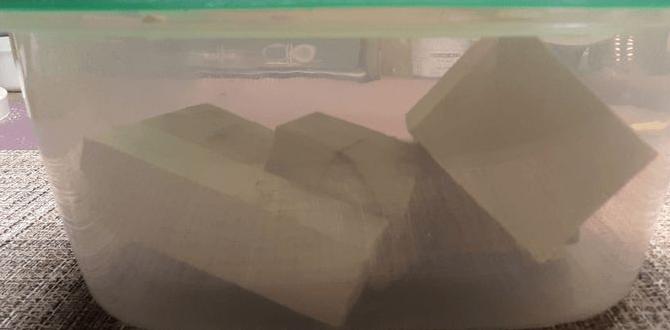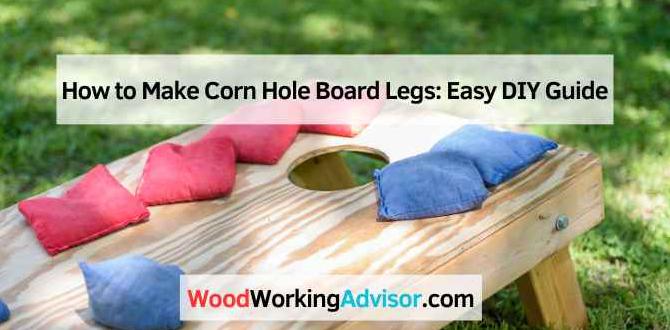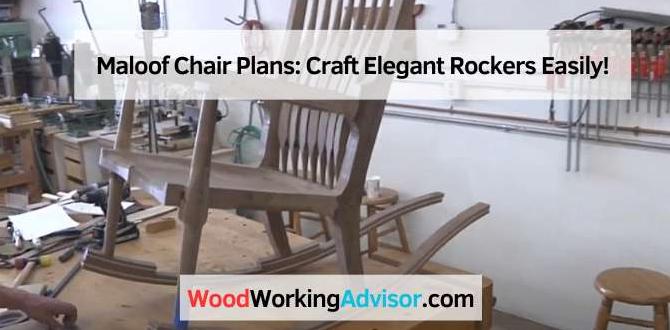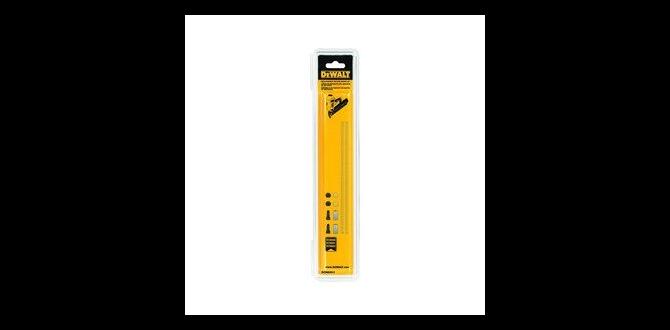Have you ever wondered what the best wood for planter boxes is? You’re not alone! Many gardeners face this question when looking to create the perfect garden. Picking the right wood is essential for your plants to thrive.
Imagine building a planter box that lasts for years. You want it to withstand the rain and shine while keeping your plants happy. But what type of wood should you choose?
Let’s explore the top choices for wood that not only look great but also hold up well outdoors. Did you know that some woods can even help your plants grow better? As we dive into this topic, you might be surprised to learn which wood types are the best fit for your next gardening project.
So, what makes one wood better than another for your planter boxes? Stay with us as we reveal the secrets to selecting the best wood for your garden!
Table of Contents
What’S The Best Wood For Planter Boxes: Top Choices Revealed
Choosing the best wood for your planter box can affect your plants’ health and growth. Cedar and redwood resist rot and pests, making them popular. Pine is affordable but may not last long. Using pressure-treated wood can be risky due to chemicals. Did you know that untreated wood can eventually become a home for insects? Selecting high-quality wood helps your garden thrive. Think about durability and safety when making your choice!
Cedar: The Classic Choice
Naturally resistant to rot and insects. Lightweight and sustainable option.
Cedar wood is a popular choice for planter boxes. It is naturally resistant to rot and bugs. This means it can last a long time outdoors. Many people like using cedar because it is lightweight. You can easily move your planter around. Cedar is also a sustainable option. Trees can grow back quickly, making it a smart choice for the planet.
Why Choose Cedar for Planter Boxes?
Cedar wood is an excellent material for planter boxes due to its natural durability and lightweight nature.
- Rot-resistant properties keep your plants safe.
- Lightweight and easy to handle.
- Sustainable, helping the environment.
Redwood: A Durable Alternative
High durability and longevity. Attractive natural appearance.
Redwood is a great choice for planter boxes. It lasts for many years because of its high durability. This wood can handle different weather conditions without breaking down easily. Plus, it looks lovely! The natural reddish-brown color adds beauty to any garden.
- Durability: Redwood resists rot and insects.
- Appearance: Its warm tones make gardens more inviting.
Why Choose Redwood for Planter Boxes?
Redwood is a top pick due to its long-lasting strength and beautiful look.
Pressure-Treated Pine: Affordable and Accessible
Costeffective solution for gardeners. Considerations for chemical treatment safety.
Many gardeners like pressure-treated pine because it is affordable and easy to find. This wood is a cost-effective choice for planter boxes. However, it’s important to remember that the wood is treated with chemicals to protect against rot. Always check for safe practices to use it in gardening.
Is pressure-treated pine safe for plants?
Yes, pressure-treated pine is generally safe for plants. However, make sure the chemicals used are approved for gardening.
Considerations:
- Choose wood treated with safe chemicals.
- Limit contact with soil in edible gardens.
- Seal the wood for extra protection.
Teak: Luxury for Gardeners
Exceptional water resistance and durability. Highend aesthetic appeal for highbudget projects.
Teak wood is a top choice for planting boxes, and it offers many advantages. First, it has exceptional water resistance, which keeps your plants happy and healthy. It can last for many years without rotting. Second, teak has a high-end aesthetic appeal. Its rich color and fine grain make any project look classy. All these features make teak perfect for those who want beauty and strength in their gardens.
Why Choose Teak Wood for Planter Boxes?
Teak wood lasts longer than other types of wood. It can endure harsh weather and keeps its look over time. This makes it a smart investment for gardening.
Benefits of Teak Wood:
- Highly durable
- Water-resistant
- Beautiful natural color
- Long-lasting quality
Hardwood Varieties: Oak and Maple
Benefits of using hardwood for planter boxes. Potential challenges, such as weight and cost.
Hardwood like oak and maple makes strong and beautiful planter boxes. These woods resist insects and rot. They last longer, so you get more value. However, they can be heavy, making them hard to move. Also, they usually cost more than softer woods.
- Durability: Lasts for years against weather.
- Strength: Can hold heavier soil and plants.
- Appearance: Looks great in any garden.
What are the potential challenges of using hardwood for planter boxes?
Hardwoods can be heavy and expensive. Consider your budget and if you can easily lift them. These factors are important for your gardening project.
Composite Materials: Modern Solutions
Made from recycled materials, environmentally friendly. Durability and maintenance compared to natural wood.
Composite materials offer a smart choice for planter boxes. They are made from recycled materials, making them eco-friendly. This helps protect our planet. Unlike natural wood, composite materials are strong and resist rot. They require less maintenance over time. You can enjoy your garden without worrying about constant repairs!
- Durability: Long-lasting and strong against weather damage.
- Maintenance: Minimal care needed compared to wood.
- Environmentally Friendly: Made from recycled materials.
What are the benefits of using composite materials for planter boxes?
Composite materials are durable, easy to maintain, and good for the environment. They last longer than natural wood and require less upkeep. Plus, using recycled materials helps protect our planet. These boxes are perfect for any gardener!
Choosing the Right Wood for Your Climate
Factors to consider based on local weather conditions. Compatibility of different woods with plants.
Climate is like the mood of your garden! If you live in a wet area, softwoods like cedar or redwood are great. They resist rot, keeping your plants smiling. In hot spots, consider tougher woods like oak, which can handle the heat without cracking. But hold on! Not all woods are friendly to plants. Some can release chemicals that make your plants frown. So, stay smart and choose wisely!
| Climate | Best Wood | Plant Compatibility |
|---|---|---|
| Wet | Cedar | Safe for most plants |
| Hot | Oak | Good for drought-tolerant plants |
| Cold | Redwood | Great for all types |
Finishing and Treatment Options
Stains, sealants, and preservatives for longevity. Tips on applying finishes safely and effectively.
To keep your planter boxes standing tall and proud, consider using stains, sealants, and preservatives. These solutions help protect wood from water and pests. Just imagine that boring wood suddenly looking bright and shiny! Applying finishes can be a breeze if you follow a few simple steps. Always wear gloves and work in a well-ventilated area to avoid those “oops” moments. You don’t want to be a glue-covered superhero!
| Type | Purpose |
|---|---|
| Stains | Add color and depth |
| Sealants | Block moisture |
| Preservatives | Repel insects |
By keeping these tips in mind, your planter boxes will not only look awesome but will also last longer. Think of it as giving your wood a superhero cape!
Cost Analysis: Budgeting for Your Planter Box
Comparing costs of different wood types. Understanding longterm investment versus initial costs.
Choosing the right wood for your planter box involves some number crunching. Different woods come with different price tags. For example, cedar costs more upfront but lasts longer. Pine is cheaper initially but may need replacement sooner. This is the heart of the decision: initial cost versus long-term investment. Here’s a quick cost breakdown:
- Cedar: Higher initial cost, great durability
- Pine: Cheaper, shorter lifespan
- Redwood: Mid-range cost, resistant to decay
This shows how choosing wisely can save money in the long run.
What is the cheapest wood for planter boxes?
Pine is often the cheapest option for planter boxes, making it a popular choice.
Conclusion
In conclusion, choosing the best wood for planter boxes matters a lot. Cedar and redwood resist rot and insects well. Pine is cheaper but may not last as long. Remember to treat your wood for added protection. Now that you know the best options, you can create beautiful planter boxes. Explore more ideas to enhance your gardening projects!
FAQs
What Are The Most Durable Types Of Wood For Outdoor Planter Boxes?
The best woods for outdoor planter boxes are cedar, redwood, and cypress. They resist rot and bugs, which helps them last longer. You can also use treated pine, but it should be safe for plants. These woods will help keep your plants healthy and happy!
How Does The Choice Of Wood Affect The Longevity And Health Of Plants In Planter Boxes?
The type of wood you choose for planter boxes can affect how long they last and how healthy your plants are. Some woods, like cedar, naturally resist rot and insects. This helps your planter box stay strong for many years. Other woods might break down faster, which can hurt your plants by letting them dry out. Good wood choice helps your plants thrive!
Are Treated Woods Safe For Planting Edible Plants In Planter Boxes?
Treated woods are not safe for planting edible plants. They contain chemicals that can harm you. If you want to grow vegetables or fruits, use safer wood like cedar or untreated wood. This way, you can enjoy your plants without worry!
What Wood Types Are Best Suited For Different Climates When Building Planter Boxes?
When building planter boxes, you should choose wood based on the weather. For wet places, like rainy areas, cedar and redwood are good. They resist rot. In hot, dry climates, you can use pressure-treated wood, which lasts longer. For cooler areas, pine is cheap and works well if you protect it with paint or sealant.
How Can I Prevent Rot And Decay In Wooden Planter Boxes, Regardless Of Wood Type?
To prevent rot and decay in your wooden planter boxes, you can use a few simple tips. First, make sure the wood is treated with a special protector to keep moisture out. You should also drill holes in the bottom for drainage. This lets excess water escape. Lastly, place your planter boxes up off the ground to keep them dry. Regularly check for any signs of damage and fix them right away.




